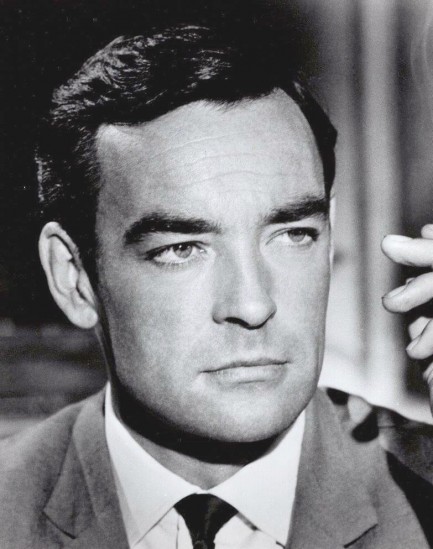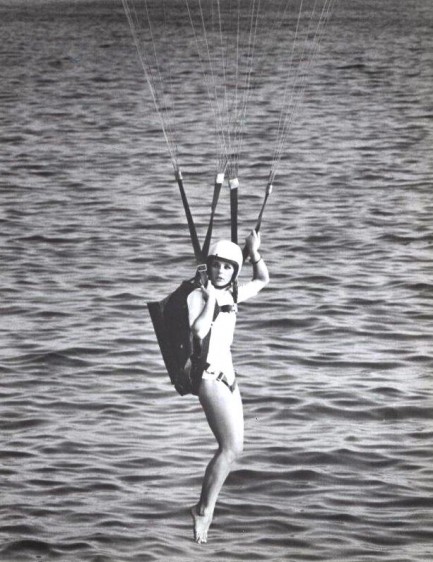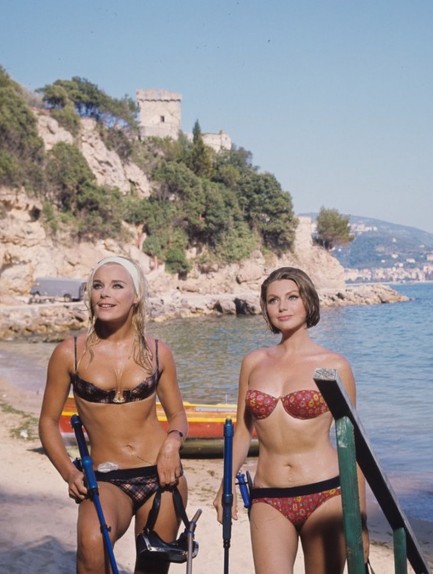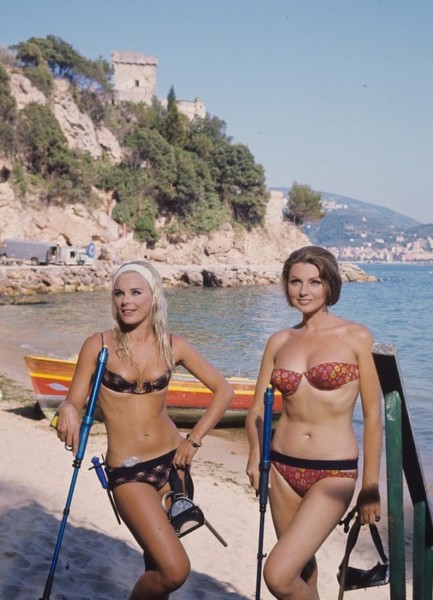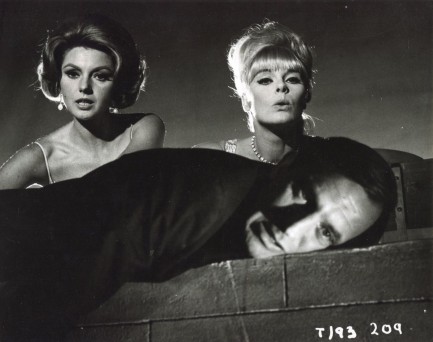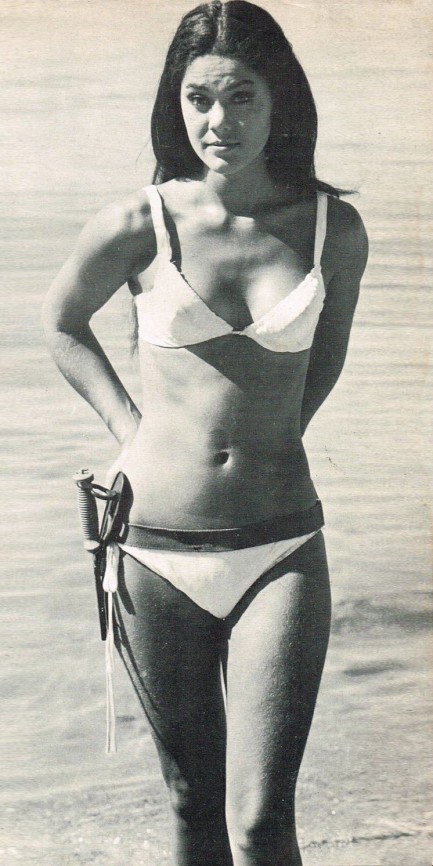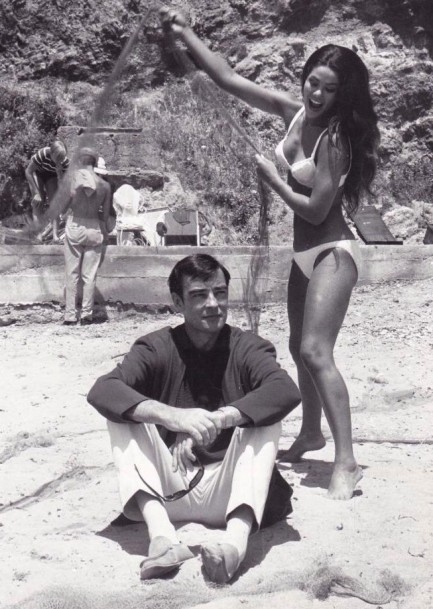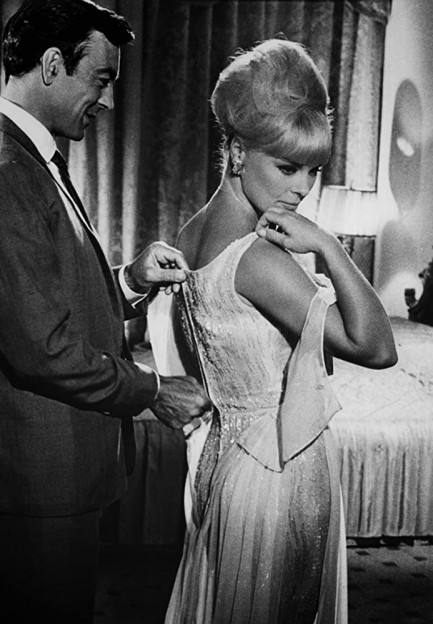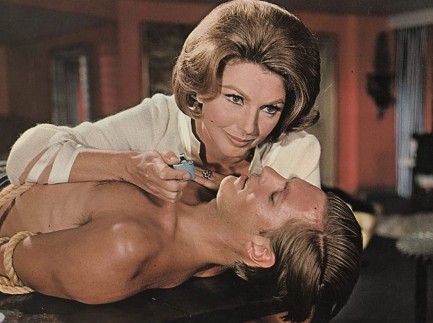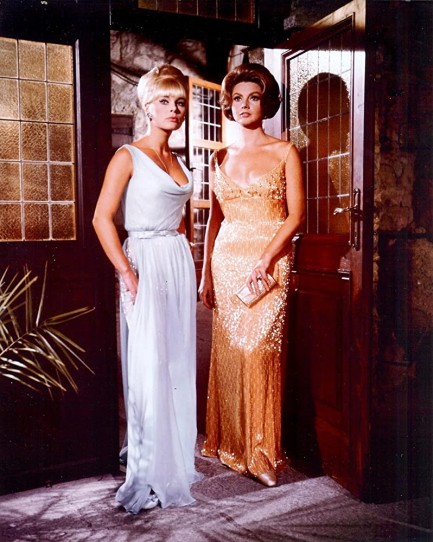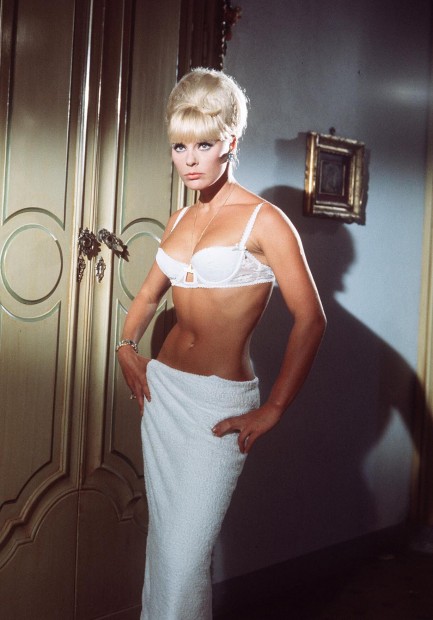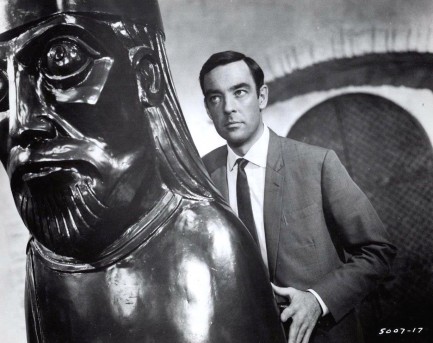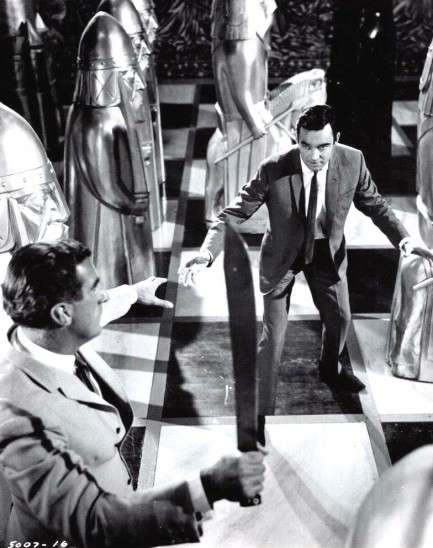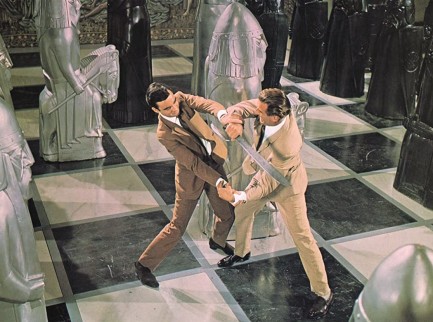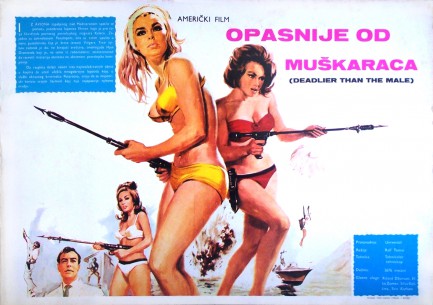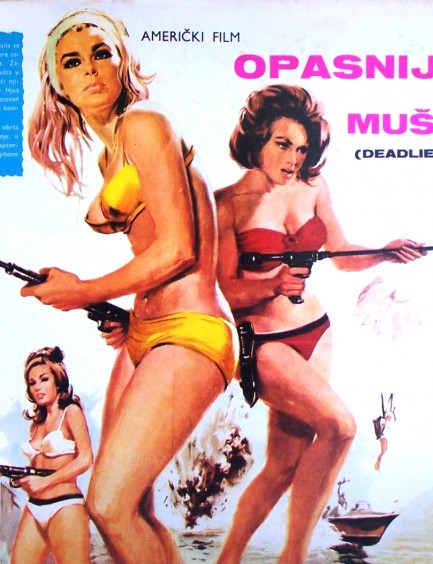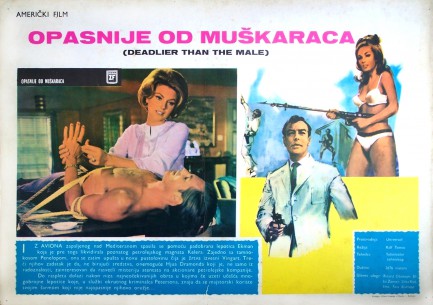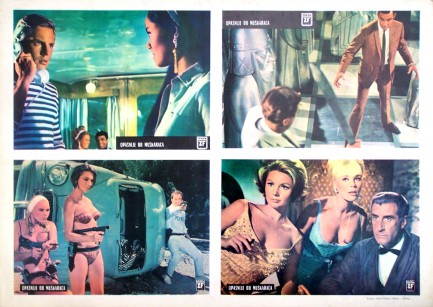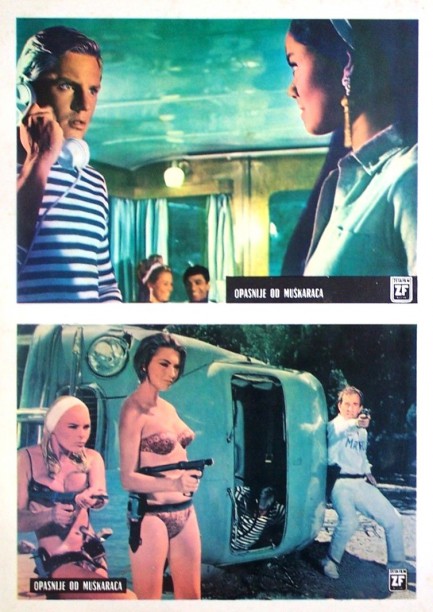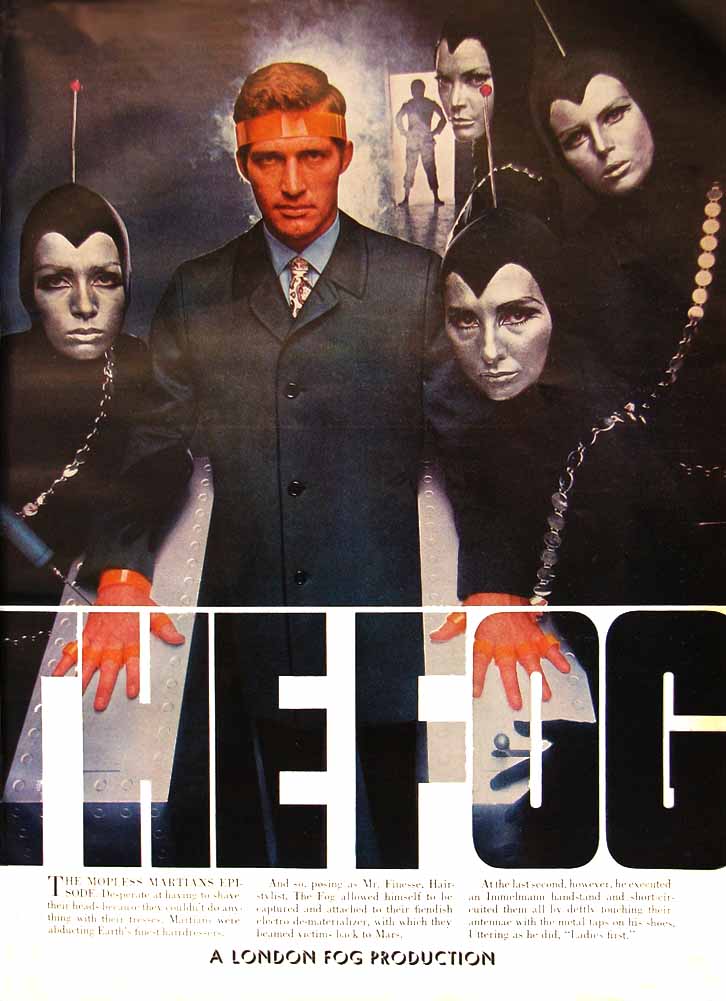 Elke snags seashells by the seashore. 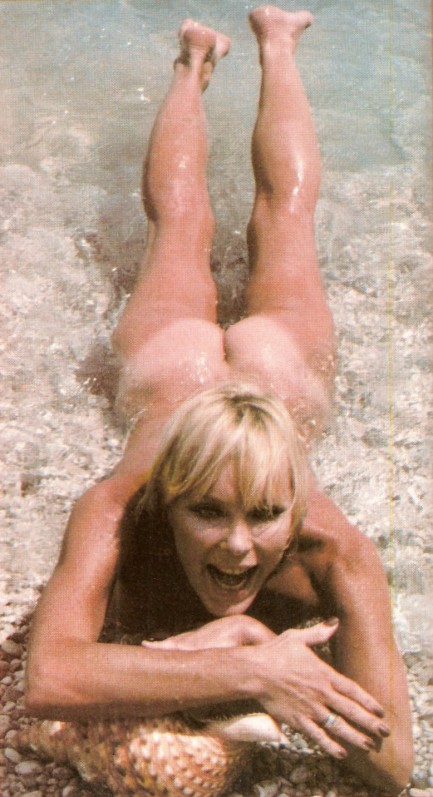
German star Elke Sommer shows her beach bum in this shot made during a photo session in Haiti in 1978, and first published in the the U.S. magazine Eros. Sommer is another of those performers who was huge during her time, but doesn't have what today most film buffs consider many quality efforts among her nearly one hundred movies. A Shot in the Dark and The Prize are probably the best remembered from her mainstream output, while cult fans tend to gravitate toward Lisa and the Devil, The Wrecking Crew, and of course Deadlier Than the Male, which we've seen and written about more than once (feel free to click its keywords just below). We're going to explore a few more of those hundred movies of hers, so maybe we'll uncover a treasure the way Sommer has uncovered the giant conch shell she's hanging onto.
 Sommer and Koscina add up to one great day. 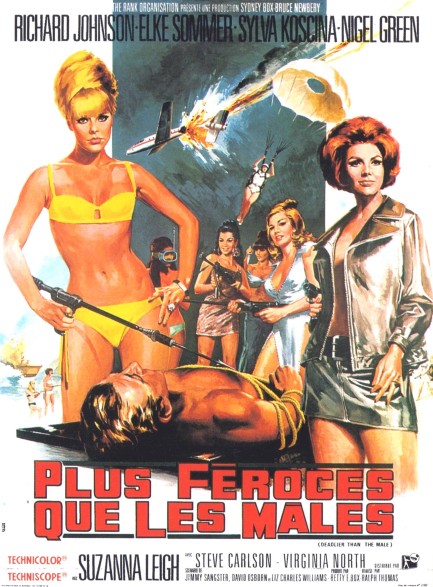
We've looked at the output of Italian illustrator Jean Mascii a few times. Above you see his work again, this time on a poster for the James Bond-style adventure Plus féroces que les mâles, which first showed in France today in 1967 but had its global premiere months earlier in England as Deadlier Than the Male. Over four decades, working from the early ’50s until the late ’80s, Mascii painted almost 1,500 movie posters, hundreds of book covers, and a copious amount of print advertising. You can click his keywords at bottom to see a few more posters we've shared on our site, or click here to take the express lane to one of his very best.
The “deadlier” in Deadlier Than the Male refers to co-stars Elke Sommer and Sylva Koscina, two of the more beautiful products of the mid-century era, who play assassins. We've shared posters for the film from Japan—twice—and the former Yugoslavia. Returning to it yet again is mainly an excuse to share some of the many production photos we've found—to go along with this one, this one, and this one. Today we're restricting ourselves to only Sommer and Koscina's bikini shots, because the skin and smiles say summertime to us. There are drawbacks to movie stardom, so we hear, but some days surely must be just fine.
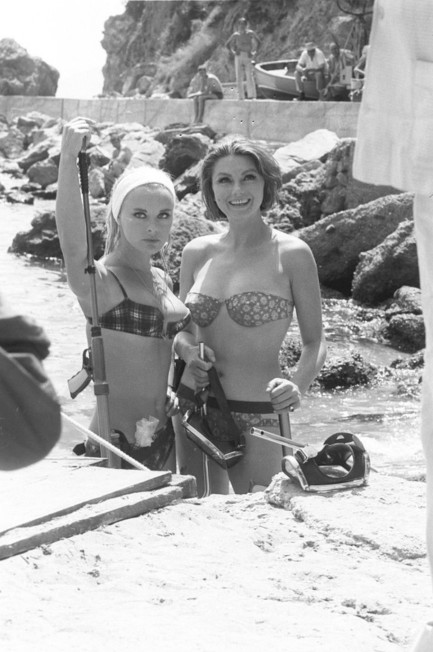 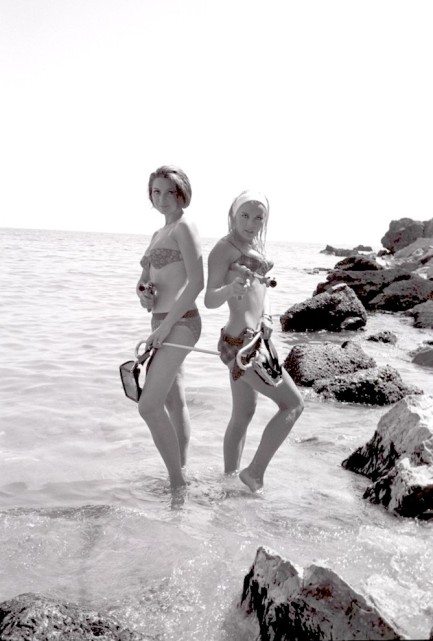 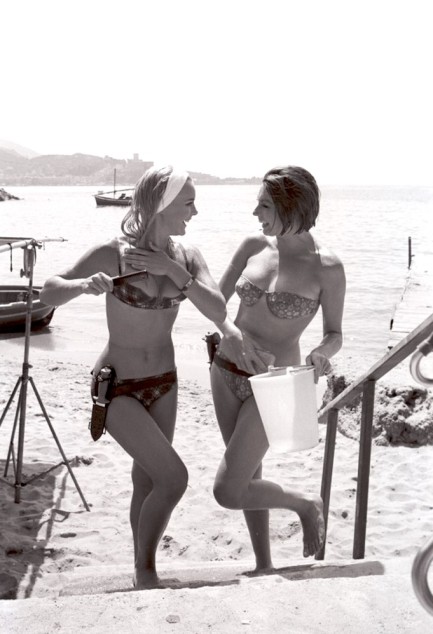 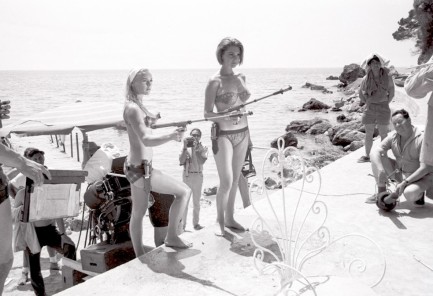 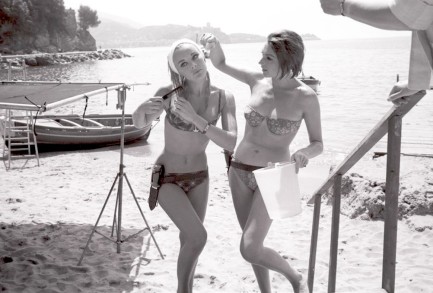 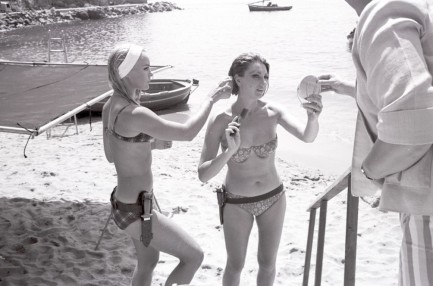 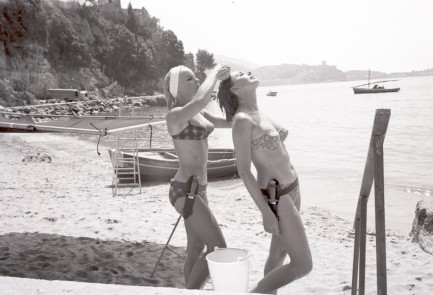 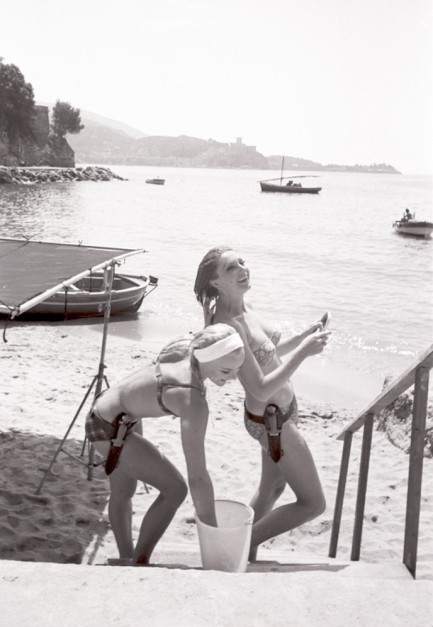 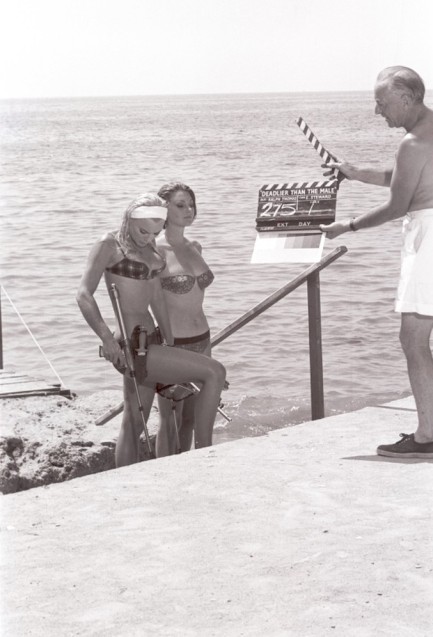 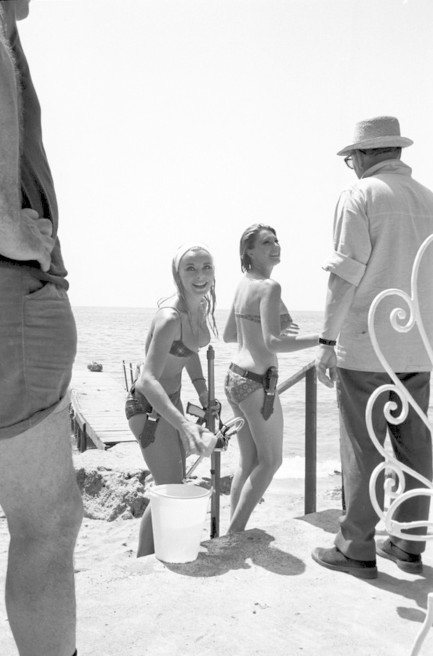 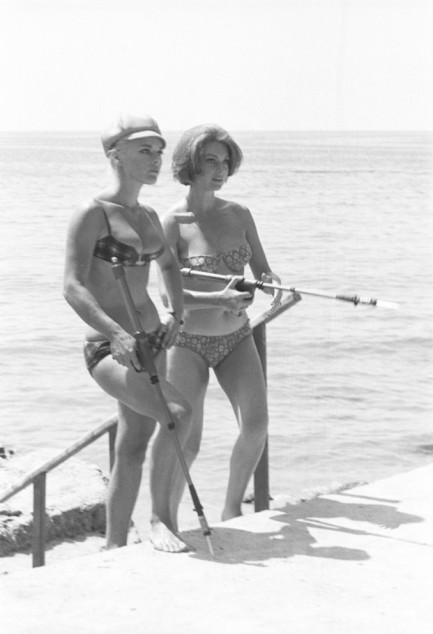 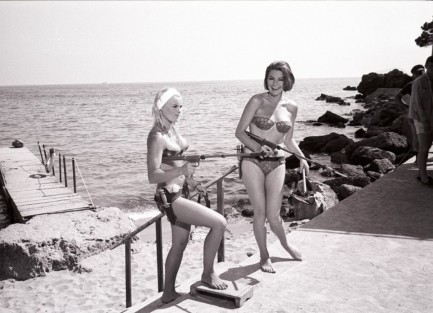 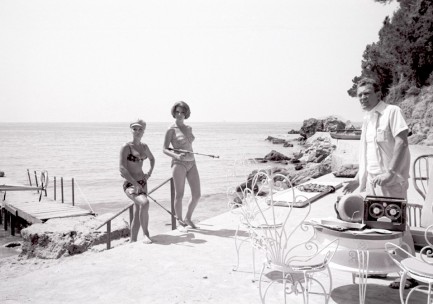 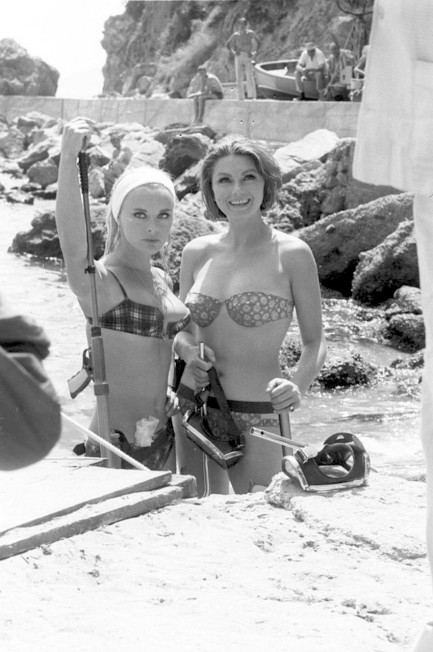 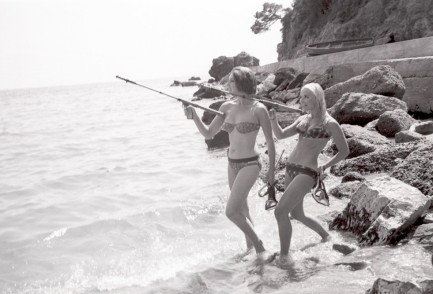 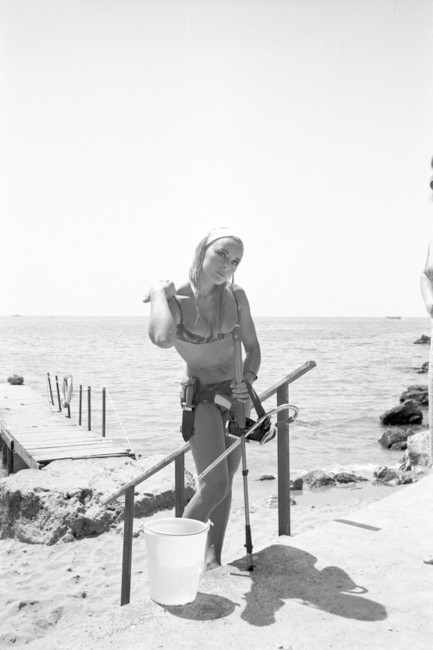 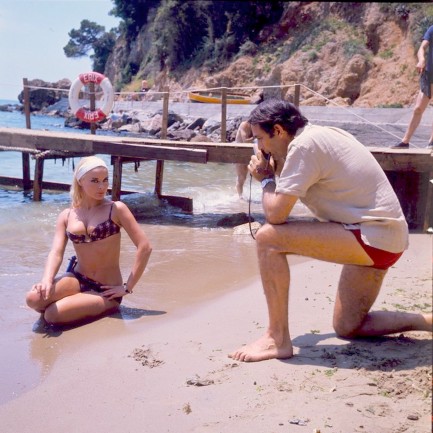 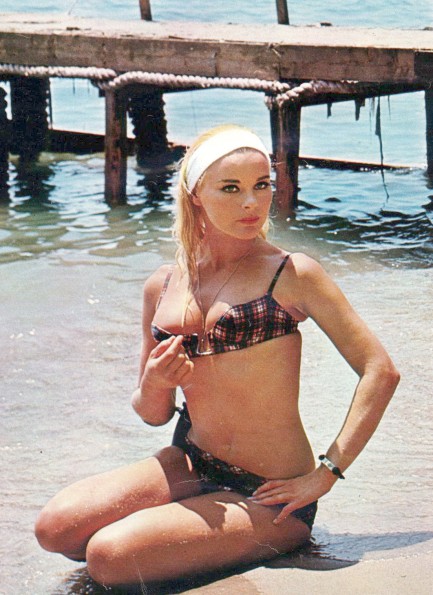 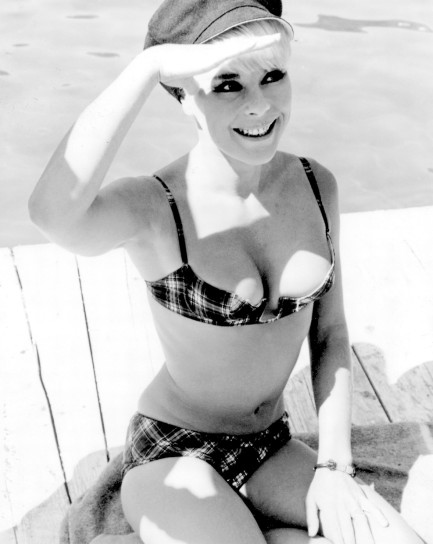 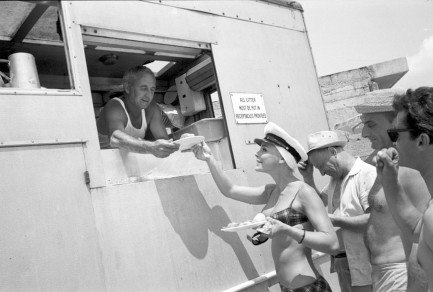 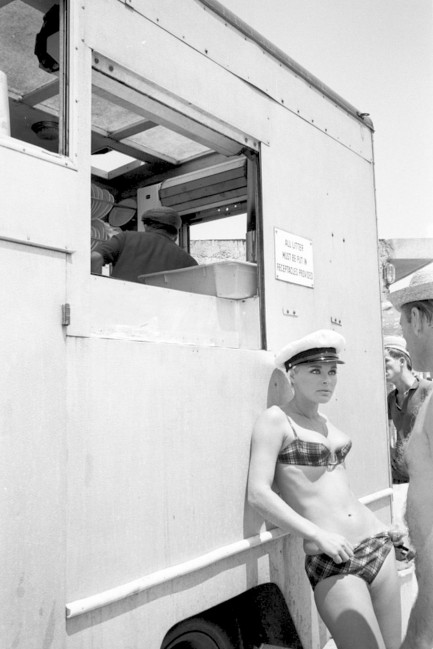 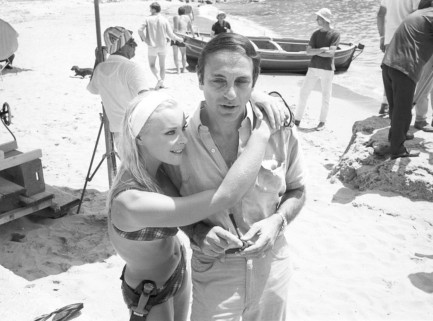 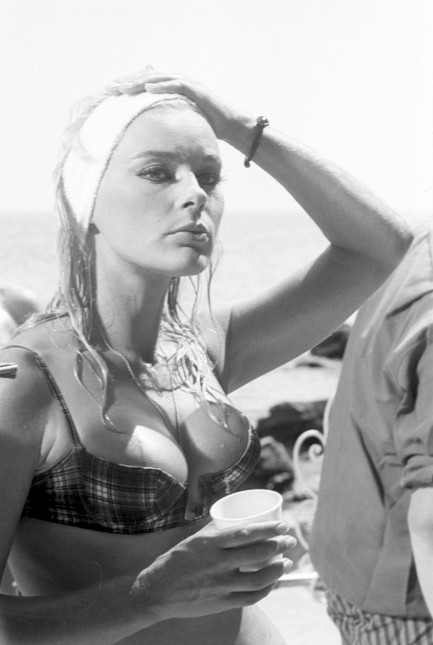 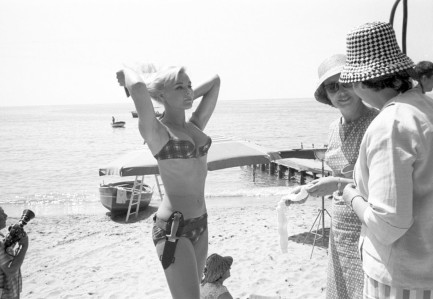 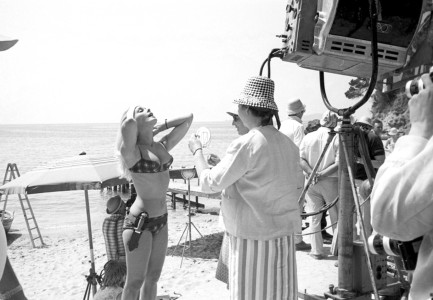 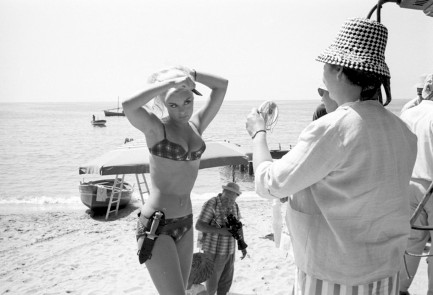 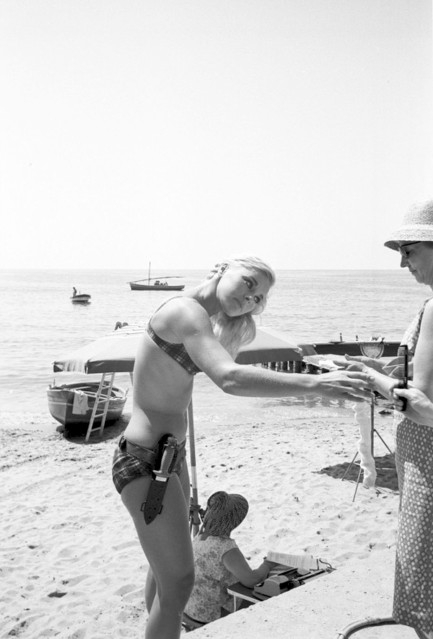 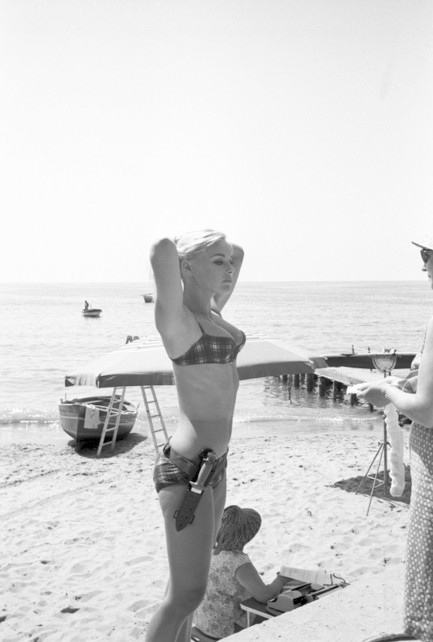 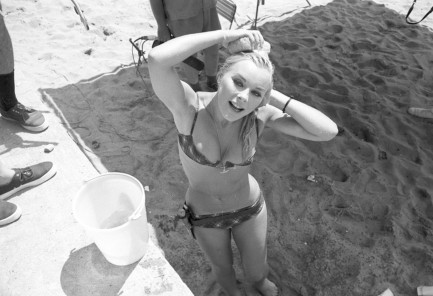 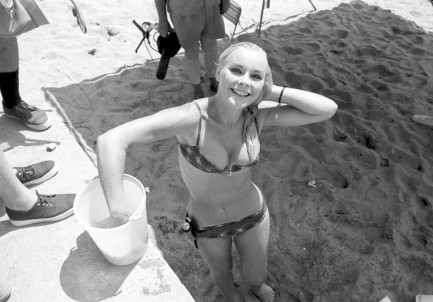 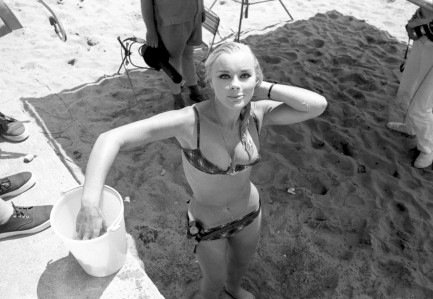 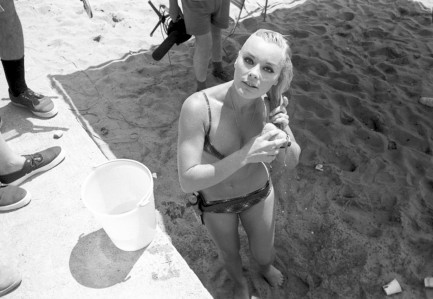 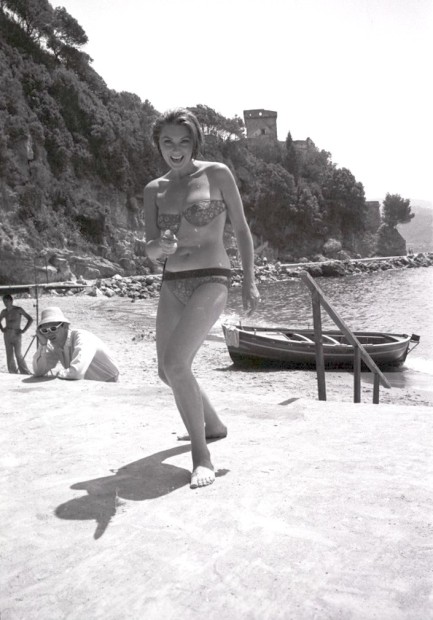 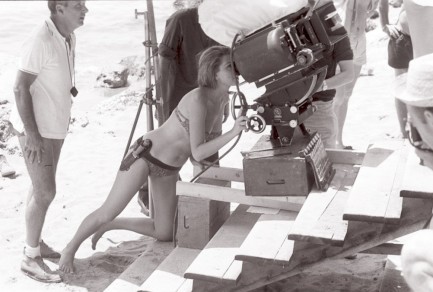 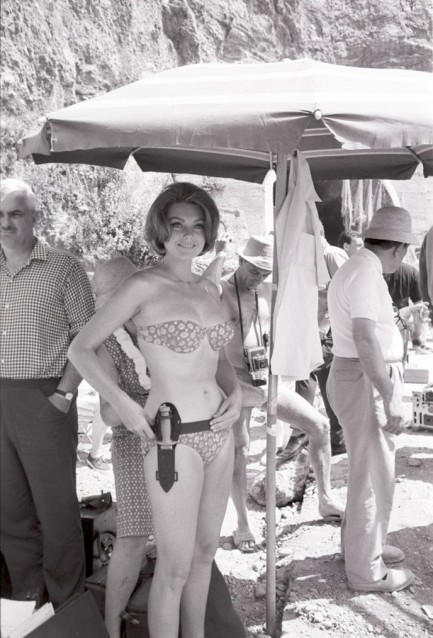 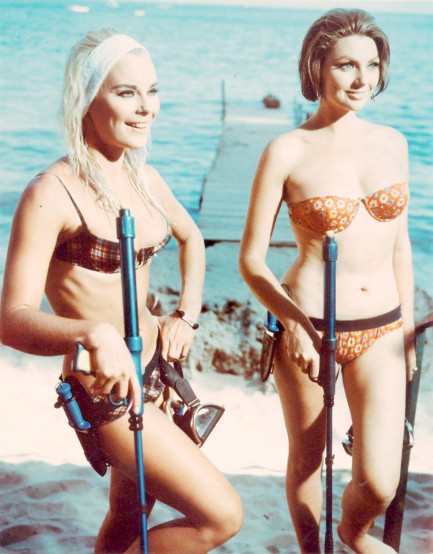
 Where Elke is concerned a cigar is never just a cigar. 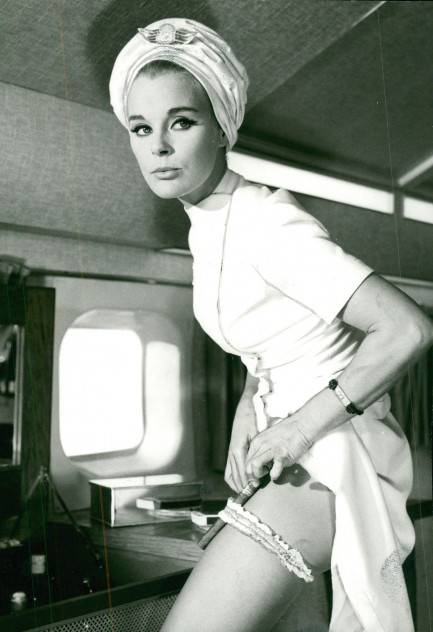
You know the famous quote attributed to Sigmund Freud, right? He's sometimes criticized for having seen phallic symbols and sexual subtext where they didn't exist, but apparently he once said, “Sometimes a cigar is just a cigar.” But not in this case. In 1967's Deadlier Than the Male, Elke Sommer's cigar is an explosive she uses to assassinate someone, blowing his airplane out of the sky as she parachutes safely to the ground. It's a cheeseball movie, but her turn as the ultimate femme fatale makes it worth watching. You can read more about it here, and see plenty more Elke here, there, and everywhere.
 Males top the endangered species list in 1967 spy thriller. 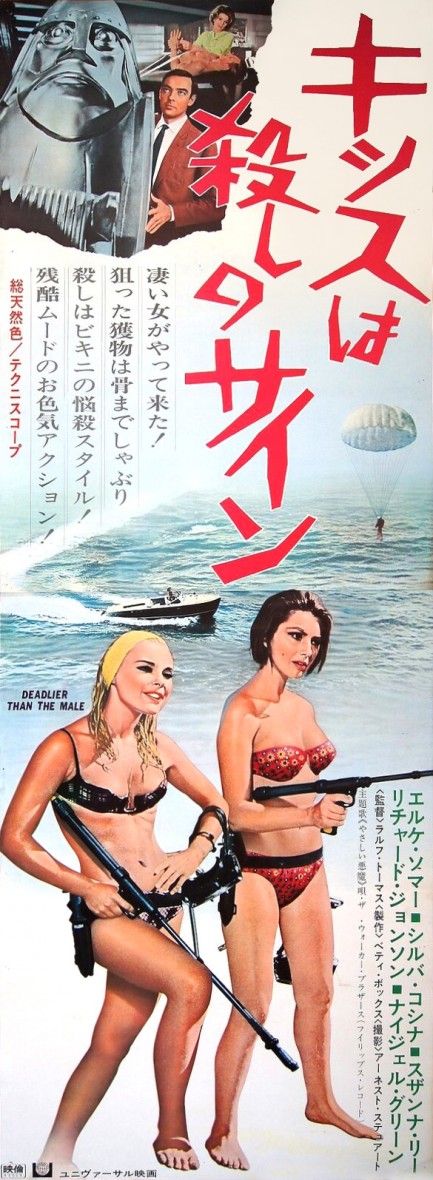
We've shared a lot of art, including a previous Japanese poster, from the James Bond knockoff Deadlier than the Male without ever actually talking about the movie. Today seems like an opportune time, since we're already on the subject of Bond clones. The film, which premiered in Japan today in 1967 after opening in the the UK earlier in the year, starred Richard Johnson, who actually came close to landing the role of Bond thanks to the interest of Dr. No director Terence Young. It didn't happen, though, and Connery as Bond makes more sense when you see Johnson, who's older, skinnier, shorter, and in less pristine shape. But he has panache, and that may be why Young wanted him. Instead he got Connery, and Johnson got the consolation prize of playing Hugh Drummond, a character that originates in H.C. McNeile novels from the 1920s, but who's updated to the ’60s in order to deal with a Cold War plot to steal rockets and divert them for nefarious means.
Like the Bond films, Deadlier than the Male offers a winning combination of action, quips, exotic scenery, and lightweight sexiness, but the film never quite rises to the upper echelons. Without the Bond budget it's hard to bring a truly thrilling vision to life. At least the filmmakers were smart enough to frontload their assets by opening the proceedings with Elke Sommer, who's second billed, but probably more important than Johnson in terms of increasing the film's watchability. She has a physicality that makes her a nice fit playing an assassin in the employ of the film's ultimate villain. Sylva Koscina co-stars as Sommer's klepto sidekick, which doesn't hurt. The pair's nefarious deeds eventually draw Johnson to their mountaintop stronghold, and there viewers are treated to a final throwdown with the evil mastermind involving a mechanized, life-sized chessboard. While Deadlier than the Male doesn't manage to out-Bond Bond, watch it with friends and beers and you'll maximize its potential.
 It's impossible to be on the fence about Elke. 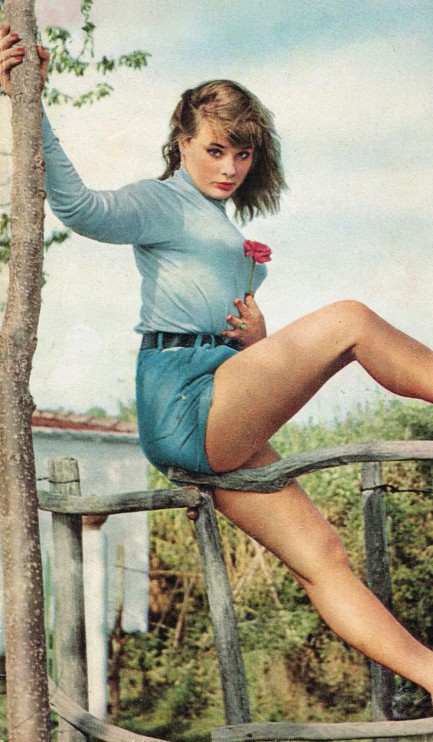
If you watch an Elke Sommer movie you notice immediately how athletic she looks. It was a trademark, and it made her unlike most of her mid-century peers. In fact, in the film Deadlier Than the Male her co-star Richard Johnson specifically disparages her body, opining, “Well, it's not bad. A little bit muscular perhaps, but then you've got to expect that with the violent sort of exercise you undertake.” Sommer was ahead of her time, that's all. Check here and here to see for yourself. This shot of her is from 1959 and appeared in the West German magazine Smart.
 Any evil a man can do she can do worse. 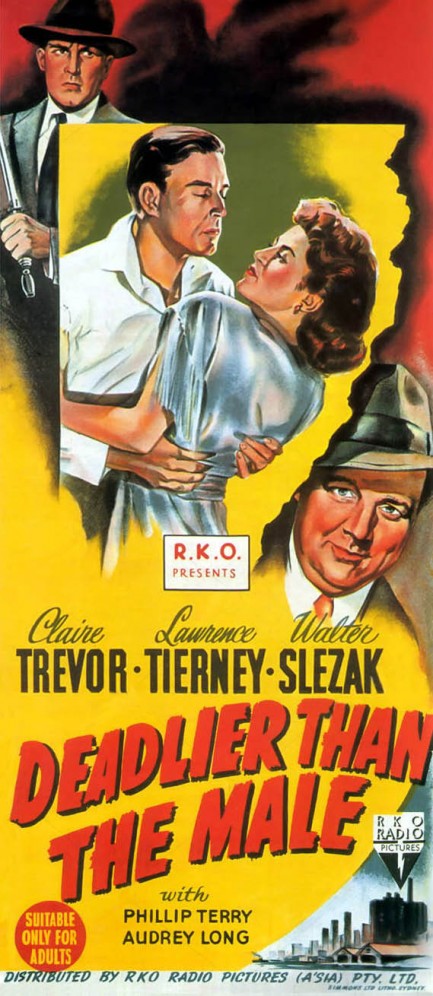
This colorful poster was made for the Australian release of Deadlier Than the Male, known elsewhere in the world as Born To Kill. The movie stars Claire Trevor and Lawrence Tierney. We had seen Trevor in several roles over the years, including in Murder My Sweet, Johnny Angel, and 1948's Key Largo, but for some reason had never learned to appreciate her talent until seeing her here. Lawrence Tierney, who you may remember as Joe from Reservoir Dogs, is also excellent, if inordinately repellent (as required by his role). A cold-hearted woman meets her match in a brutal man, and the two become entwined in both a murder coverup and adultery. Money is the backdrop but it's jealousy that is the catalyst for every terrible event that occurs. Not a perfect movie, but very good, sprinkled with engaging secondary characters—including Walter Slezak as a sleazy detective—and Trevor knocks her bit out of the park. Deadlier Than the Male premiered as Born To Kill in the U.S. today in 1947.
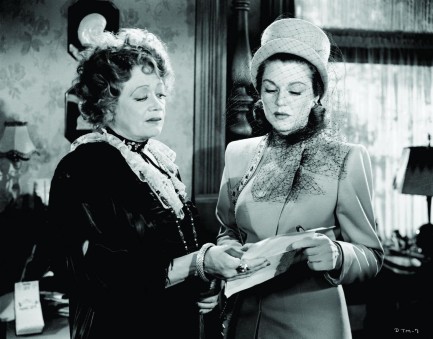 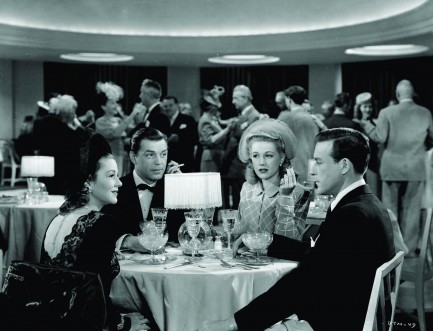 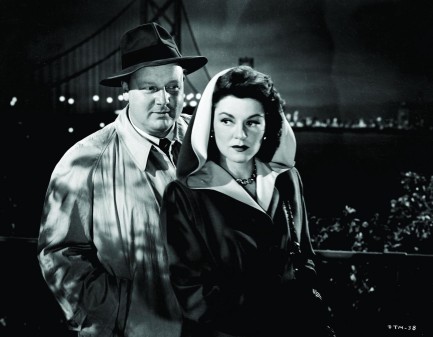
 The name doesn’t mean what you think. 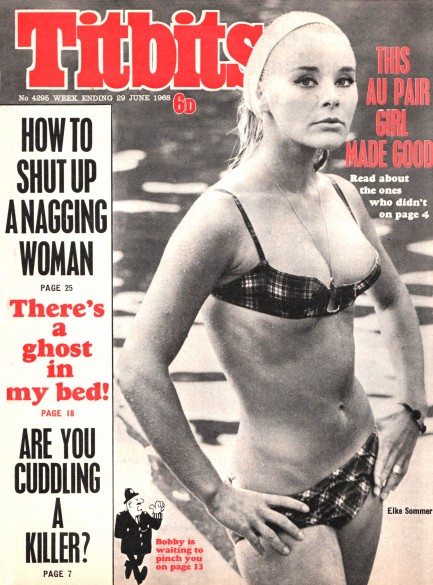
The magazine Titbits was once so popular it was the first paper to sell more than a million copies a week in Great Britain. The “tit” part isn’t what you think, though this cover image might lead you to jump to conclusions. But actually, the magazine was launched in 1881 as Tit-Bits, and its full name from back then clarifies matters: “Tit-Bits from all the interesting Books, Periodicals, and Newspapers of the World.” So basically, it just rewrote news items—tidbits—from other sources, packaged it all together and sold it off as original content. That successful formula would be emulated by many later magazines, including some of the mid-century tabloids we love to share. This Titbits, which appeared today in 1968, features Pulp Intl. fave Elke Sommer in her famous Deadlier Than the Male bikini. See more of her wearing it here, here and here.
 There's nothing quite like a perfect Sommer day. 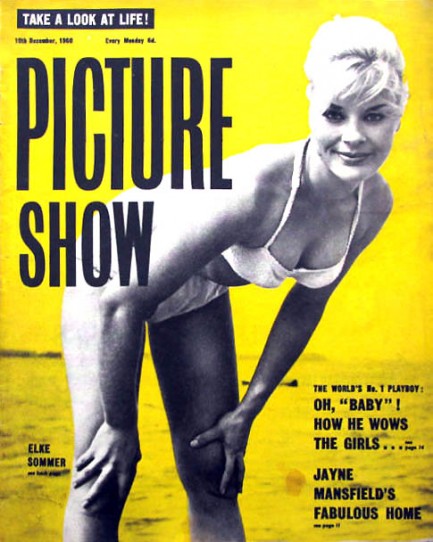
Here’s a random little something we ran across at an auction site, a duotoned cover of Picture Show from today 1968 with Elke Sommer. No interiors, but we thought we’d share it anyway because Sommer has been on our minds since we watched her in Deadlier Than the Male a couple of weeks ago. She really has to be seen to be believed in that. More from Sommer later. Update: Actually more from Sommer sooner, because we just realized there was another photo of her from the same shoot, which we've uploaded below.
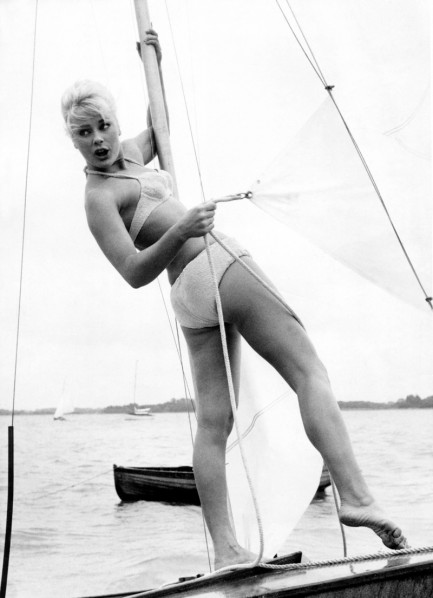
 Sommer and Koscina are rare sea creatures that hunt on land. 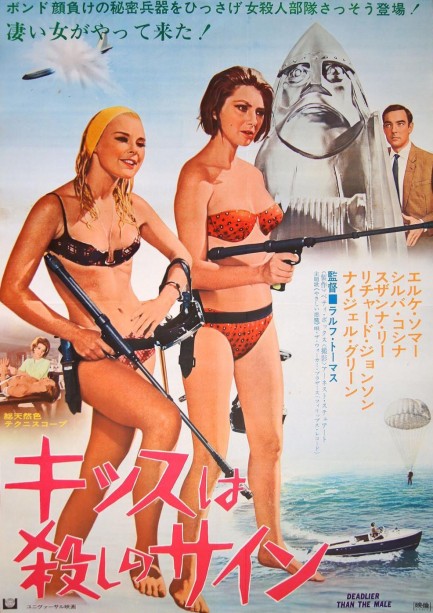
Above, a nice Japanese poster for the 1967 crime thriller Deadlier Than the Male, with Elke Sommer and Sylva Koscina. We uploaded a couple of promo shots from this production a long while ago, and you can see them here and here.
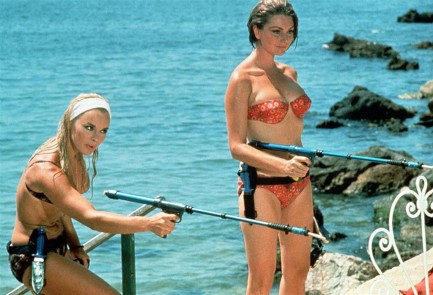

|
 |

The headlines that mattered yesteryear.
1945—Churchill Given the Sack
In spite of admiring Winston Churchill as a great wartime leader, Britons elect
Clement Attlee the nation's new prime minister in a sweeping victory for the Labour Party over the Conservatives. 1952—Evita Peron Dies
Eva Duarte de Peron, aka Evita, wife of the president of the Argentine Republic, dies from cancer at age 33. Evita had brought the working classes into a position of political power never witnessed before, but was hated by the nation's powerful military class. She is lain to rest in Milan, Italy in a secret grave under a nun's name, but is eventually returned to Argentina for reburial beside her husband in 1974. 1943—Mussolini Calls It Quits
Italian dictator Benito Mussolini steps down as head of the armed forces and the government. It soon becomes clear that Il Duce did not relinquish power voluntarily, but was forced to resign after former Fascist colleagues turned against him. He is later installed by Germany as leader of the Italian Social Republic in the north of the country, but is killed by partisans in 1945. 1915—Ship Capsizes on Lake Michigan
During an outing arranged by Western Electric Co. for its employees and their families, the passenger ship Eastland capsizes in Lake Michigan due to unequal weight distribution. 844 people die, including all the members of 22 different families. 1980—Peter Sellers Dies
British movie star Peter Sellers, whose roles in Dr. Strangelove, Being There and the Pink Panther films established him as the greatest comedic actor of his generation, dies of a heart attack at age fifty-four.
|

|
|

It's easy. We have an uploader that makes it a snap. Use it to submit your art, text, header, and subhead. Your post can be funny, serious, or anything in between, as long as it's vintage pulp. You'll get a byline and experience the fleeting pride of free authorship. We'll edit your post for typos, but the rest is up to you. Click here to give us your best shot.

|
|












































